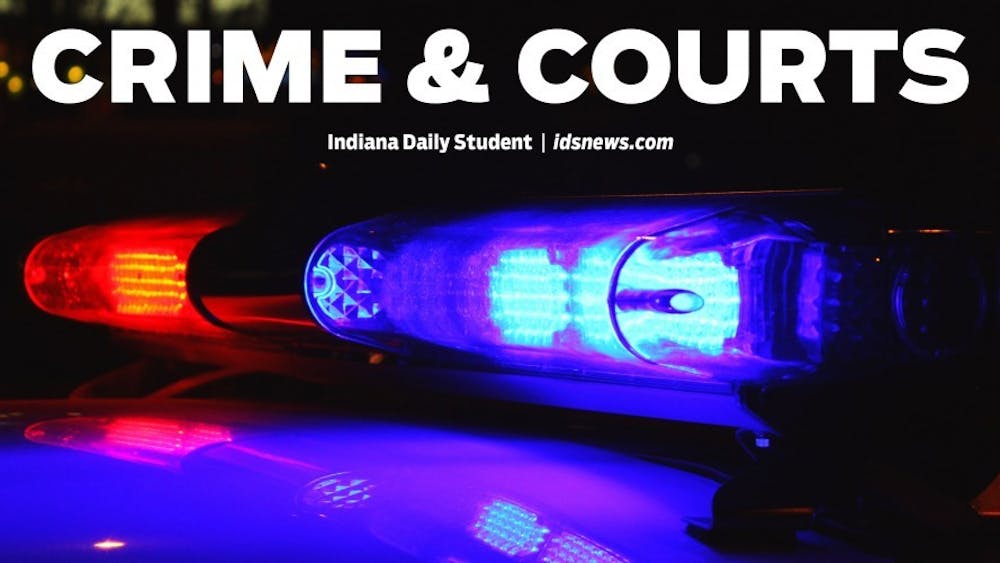About 10 minutes after senior Samantha Bingham's train pulled out of the Pentagon Metro station, a plane under terrorist control crashed near the military complex. She wouldn't find out until she arrived at work in Washington that the World Trade Center and part of the Pentagon had crumbled after the worst terrorist attack ever waged against the United States. \n"People were looking out the windows, everyone had tears in their eyes," she said. \nAbout 60 IU students were in the Washington area at the time of the attack. None were among the estimated 100 people who died or the 40 who were hospitalized when a section of the Pentagon burned and collapsed.\nThe plane that damaged the Pentagon was carrying 58 passengers to Los Angelos from Dulles Airport near Washington. The crash came less than two hours after two planes crashed into the World Trade Center Towers in New York City.\nBingham, an intern at the Environmental Protection Agency, walked home with a co-worker after the building was evacuated.\n"It was really eerie at a point where we saw the Washington Monument in the foreground, with billows of smoke behind it," she said. \nAfter two hours of walking, Bingham and the co-worker were picked up by a Good Samaritan. \nBingham went back to the Alexandria, Va., apartment complex where 35 IU students who participate in SPEA's Washington Leadership program live, about four miles south of the Pentagon. \nOwen Moore, a senior, works for the Soldier's Radio and TV Network, a division of the Army that provides national and army-related news to service men and women stationed throughout the world. When TV reports of the crash at the Pentagon aired at his office, he and co-workers rushed to the scene to cover the event. \nOnly top officials were admitted near the Pentagon, but Moore was close enough to see jet fighters, helicopters and armored vehicles surround the building. Moore said FBI agents, police and SWAT teams were racing everywhere. \n"It looked like a big bomb had been dropped, like a city block was in flames," he said. \nMoore said dozens of accidents on the highway were unattended since emergency vehicles had concentrated at the Pentagon. \n"It was unbelievably chaotic," he said. "There was a general sense of vindictiveness there within the army. Everyone wants revenge, civilians as well."\n On Capitol Hill, senior Brian Wlazlo was opening mail when other employees working for Sen. Evan Bayh (D-Ind.) gathered around the television. About five minutes after the second plane hit the World Trade Center, the lines in Bayh's office lit up.\n "People were saying 'go to war,'" Wlazlo said.\nFirst lady Laura Bush was scheduled to speak Tuesday in the Russell Senate Office Building where Wlazlo is an intern, but the event was cancelled and the building was evacuated shortly after reports of the Pentagon crash were known. \n"No one really panicked," Wlazlo said. "Everyone was trucking down the staircase faster than they normally would."\nAs Wlazlo and other interns walked among hundreds of other Hill staffers toward the Union Station Metro stop, they heard an explosion of unknown origins.\n"Everyone did a half-duck kind of a move," he said. "Everyone was looking around, there was no smoke in the immediate area. After that people started jogging and one guy started sprinting."\nSenior Christian Haumesser watched smoke roll past the windows of his office at the Department of Housing and Urban Development where he is an intern. At about 9:30 a.m. EST an announcement on the intercom urged employees to evacuate the building. \n"People were driving insanely -- I couldn't even cross the street. Everybody was running red lights in a panic to get out of the city."\nAfter walking around the city for near two hours, waiting for the Metro service, he headed back home.\n"I've never had as many conversations with complete strangers on the Metro -- talking about the news, what they'd seen," he said. "People were concerned about what would happen next, what the U.S. would do in retaliation."\n When the IU students in the SPEA program got back to the apartment complex in Alexandria, Va., most called family and friends and watched television reports of the attacks. In Washington, many had found cellular phones and land lines to be unreliable, but e-mail proved to be an effective means of communication.\n Beside the 35 students in the SPEA program, about 25 who participate with the Navy Executive Education Program were safe on Tuesday, Sharon Brehm, IU Chancellor said. \nMarc Lame, the SPEA professor who leads classes for the Washington Leadership Program, said he was glad to learn that all the students were safe, although most students were inconvenienced by hours-long commutes. \n"(Students) realize that sitting in traffic alive was not too much to worry about considering the alternatives," he said.
Staff reporter Rachel Kipp contributed to this report.





